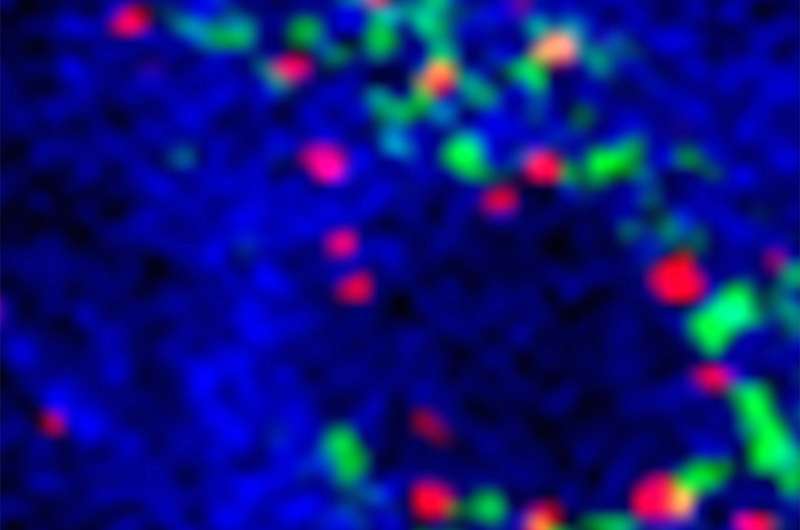Study reports possible novel method for stopping untreatable pediatric brain cancers

Researchers used an experimental molecular therapy in preclinical laboratory tests to effectively treat several types of deadly pediatric brain cancer and now propose advancing the treatment to clinical testing in children.
Scientists at the Cincinnati Children's Cancer and Blood Diseases Institute report in the journal Molecular Cancer Therapeutics testing the small molecule 6-thio-2'deoxyguanosine (6-thio-dG) in brain cancer stem cells derived from tumor cells donated by patients. Researchers also tested the treatment in humanized mouse models of pediatric brain cancer.
The cancers include intrinsic pontine glioma (DIPG), high-grade glioma (HGG) and high-risk medulloblastoma (MB).
In preclinical laboratory tests, the targeted molecular therapy crossed the body's protective blood-brain barrier in mouse models—causing extensive DNA damage in cancer cells and stopping or slowing two untreatable types of pediatric brain cancer. The therapy did not affect non-cancerous cells in the animals, according to the scientists. The therapeutic benefits of 6-thio-dG continued in the animals after treatment was ended.
"These findings show that 6-thio-dG is a promising novel approach to treat therapy resistant pediatric brain tumors and they provide a rationale for clinical testing of this treatment in children with brain tumors," said Rachid Drissi, PhD, a senior study investigator in the Division of Oncology.
More Research Needed
Although 6-thio-dG does not appear to enter non-cancerous cells, Drissi stressed more research is needed to ensure the compound's safety before clinical testing in patients. These studies are underway.
Despite decades of research effort and technological advancements, DIPG and other high-risk pediatric brain cancers have continued to defy effective treatment.
This study shows that after injection, 6-thio-dG worked by first crossing the blood-brain barrier of DIPG mouse models—a significant advancement that eliminates a major hurdle to treating brain cancers with drugs. The blood-brain barrier protects the organ from pathogens passing through the circulatory system, making it pharmacologically impenetrable.
Interrupting Immortality
The compound works by triggering extensive DNA damage in brain cancer cells and cancer stem cells. To accomplish this, the compound disrupts the function of telomeres on the chromosomes of brain cancer cells, according to the researchers.
Telomeres are repeated sequences of DNA at the ends of chromosomes that prevent or minimize genetic instability in cells. As cells age, telomeres normally shorten and genetic instability helps kill off the aging cells. But brain cancer cells become immortal because their telomere length continue to be maintained by the enzyme telomerase, making the cells difficult or impossible to kill.
Drissi and his colleagues have shown in earlier studies that 73 percent of DIPG tumors and 50 percent of high-grade gliomas have the enzyme telomerase. Essentially, telomerase helps cancer cells maintain the length of their telomeres.
This led the research team to use a treatment protocol with 6-thio-dG, which already is being tested in preclinical research on lung cancer at another institution. The compound 6-thio-dG is manufactured to be like a similar, naturally occurring ingredient in telomeres. After injection and entrance to the brain, 6-thio-dG is incorporated in cancer cell chromosomes, which causes telomerase-dependent telomere damage.
More information: Satarupa Sengupta et al, Induced Telomere Damage to Treat Telomerase Expressing Therapy-Resistant Pediatric Brain Tumors, Molecular Cancer Therapeutics (2018). DOI: 10.1158/1535-7163.MCT-17-0792



















